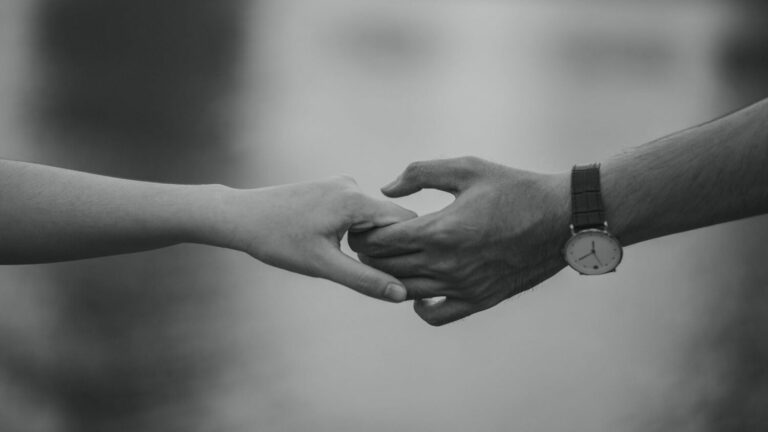Define nonverbal communication:
Some predominant factors define nonverbal communication. Gestures, facial expressions, subtle moves, and touches all together are nonverbal forms of communication. We’re going to discuss how you can improve your nonverbal communication.
The importance of communication is undeniable. And being a skill there’s always room for improvement in ours. If you ask me about the importance of nonverbal communication, then there’s a difference between listening to the radio and watching tv. We rely more on nonverbal communication, more of our communication is in this form.
Verbal Vs Nonverbal Communication
| Verbal Communication | Nonverbal Communication |
|---|---|
| Words are used | No words, actions |
| Oral and written | Visual (eg: gestures) |
| Easy to understand | Not as easy to understand |
| The possibility of miscommunication is less | The possibility of miscommunication is more |
Eye contact

Contact is what we’re talking about, every contact is a touch of communication. These pretty little things touch the soul, either soothe it or hurt it.
Do you like someone talking to you seeing somewhere else or to more dislike it look at someone else? Certainly not, absolutely unacceptable. Metaphorically speaking, eyes listen, so if someone is looking at you while you speak, you know that he is listening. And that’s also a reason why nonverbal communication is important.
Hence, for both nonverbal and verbal communication, eyes have a role to play, an important one. And you cannot define nonverbal communication ignoring eyes.
Observe
In the comparison between nonverbal vs verbal communication, you have to be a very good observer when you want to get communicated nonverbally. The more keenly you observe the more cues you get based on which you comprehend the information.
What are nonverbal communication cues one may ask? then they are the subtle cues one gives out often even unintentionally. Because it is unavoidable, inevitable, and spontaneous. You just have to keep looking.
Consider the context
And while you’re looking for the aspects which define nonverbal communication, please consider that these have to be observed, understood, and comprehended in the context. Yes, one gesture, expression, or any form of nonverbal communication may not mean what it looks like. The actuality has a lot to do with cumulativeness.
For instance, if someone scratches his neck or nose often, before jumping to any conclusion of him being upset or nervous consider the possibility of his need to do so if it itches because it just might be so.
We’ve also discussed the types of nonverbal communications

Features work in clusters
And also, look for supportive clues and signals which consolidate your hypotheses and assumptions. If your brain processes the nonverbal gesture means this then give it some more time to get a few more supportive clues that support your present assumptions. And remember, it might still just be an assumption.
If a person is nervous, you won’t find the clue only on the face or hands, it has to be all over. So does happiness or any other emotion. So, just wait before jumping to any conclusions.
Observe yourself and experiment

We often get to see people, a lot of them every day. But to master the skill of nonverbal form of communication, in fact, to matter both verbal and nonverbal communication, you need to practice.
As in the case of others, we’re sorry for certainty, whereas about ourselves we aren’t. We know what we are thinking every moment. Hence if you intend and keep connecting your behavior to your thoughts then you’re looking at examples of nonverbal communication with certainty. Observe yourself too.
See for synchronization between words and action
Every individual is different, all have a unique personality, we all know that. Just like everyone might have a different accent it talking style, they have different styles for their nonverbal communications.
Observation is the key, which means something for someone might be different for someone else. May it connects or personality, meanings might vary.
Just to be more close to accuracy make sure that the nonverbal clues are in synchronization with the verbal ones. Have you seen Clinton denying a relationship with that woman while his head nodding affirmatively?
Tone adds the temperature to a word
The art of communication is to know when and how to say what. And despite the words being the same, other aspects make a hell of a difference depending on how it’s said.
Though tone, might not exactly be a nonverbal form of communication, it is beyond words. And it triggers action and expression. And it also creates a mood and intensity in the message.
Communication isn’t complete if the right tone isn’t used. When we communicate, it’s not just the words we are trying to deliver, the emotion has to be delivered. And it needs tone, which sets and conveys the emotion that triggers it.
You will not like anyone praising you harshly, and you’ll not mind much when scolded softly. Try to imagine that.
Interrogate to solidify your guess
When you are getting to a conclusion by presumptions based on your observation, then do something to consolidate it. Yes, you should rely on your instinct, but you should be a precaution too.
And to make sure that what you’re thinking is closer to actuality, frame questions whose response shall help you decide. These may not be direct questions, though not always at least. Look for more symptoms that either supports your deny your growing point of view. Nonverbal and verbal communication have to go together to support each other.

Know that our reading could only be a guess
The conclusions which you drive from your nonverbal and verbal communication skills may not be conclusive. Always keep in mind that it may not be what it looks like.
You can be very good at communication if you manage to improve your abilities in this because it’s nonverbal communication that defines how good a communicator you are. Remember communication is a skill and like any other skill, it requires practice and effort to master it.










